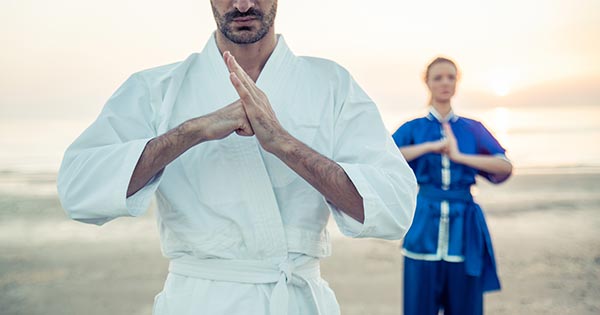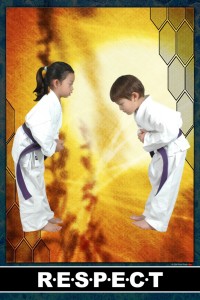Three Pillars – Mentality of a Martial Artist
Martial arts is more than learning how to physically defend ourselves. It is important to know how to use self defense, but knowing when to use it is equally important. At times we can diffuse a heated situation through words to prevent anyone from getting hurt. In order to make such distinctions, we focus on the three pillars: self-discipline, self control, and respect. These rules are what distinguish a martial artist from an attacker. We also apply the three pillars to how to live our lives positively; how we interact with friends and family and how to improve our efforts at school, work, and hobbies.
Self Discipline
Self- discipline is doing the things we know we should do, when we should do them without being told. If someone is attacking us we must to defend ourselves or escape the situation to avoid injury. Aside from self-defense situations, demonstrating self-discipline shows that we can be responsible and reliable. We can help our parents by doing chores around the house, making the bed, and cleaning up after ourselves without our parents telling us. Taking care of ourselves by eating healthy, brushing our teeth, exercising, and going to bed at a reasonable time to prevent physical ailments also shows good self discipline. We also study for school, do our best at our job, and practice at improving personal hobbies like guitar, painting, ballet, or martial arts to demonstrate our diligence. Self-discipline is key to being active.
Self Control
If we think of self-discipline as “What to do”, self-control is “what not to do”. Self-control’s definition is: controlling our behavior to fit the situation. If the situation is “being attacked in the parking lot at night” we use self-control to regulate counter-attacking to an appropriate amount. In other words, self-control is the difference between putting your attacker on the ground rather than in the ground. If the situation is a heated argument at school, we can use self-control to change the subject or avoid it to diffuse the situation. This way, tensions won’t flare into a physical fight. Other ways we can use self-control are preventing disruption, like keeping quiet in a library or raising our hand to ask a question in a classroom.
Respect
We define respect as treating others the way you want to be treated. How we treat others is a reflection of how we want others to treat us. This is why we don’t start fights with others because we don’t want others starting fights with us. Respect develops our relationships with friends, family, and anyone we interact with. For example: we can address our parents and teachers with “sir” and “mam” as a form of respect to elders. Another way to show respect is to say “please” when we request help and “thank you” to show gratitude after being helped. Respect is also one method of considering when using the other two pillars. We can decide how to demonstrate self control and self discipline after we ask ourselves: “How would I feel if he treated me this way” or “how would I want her to help me”.

